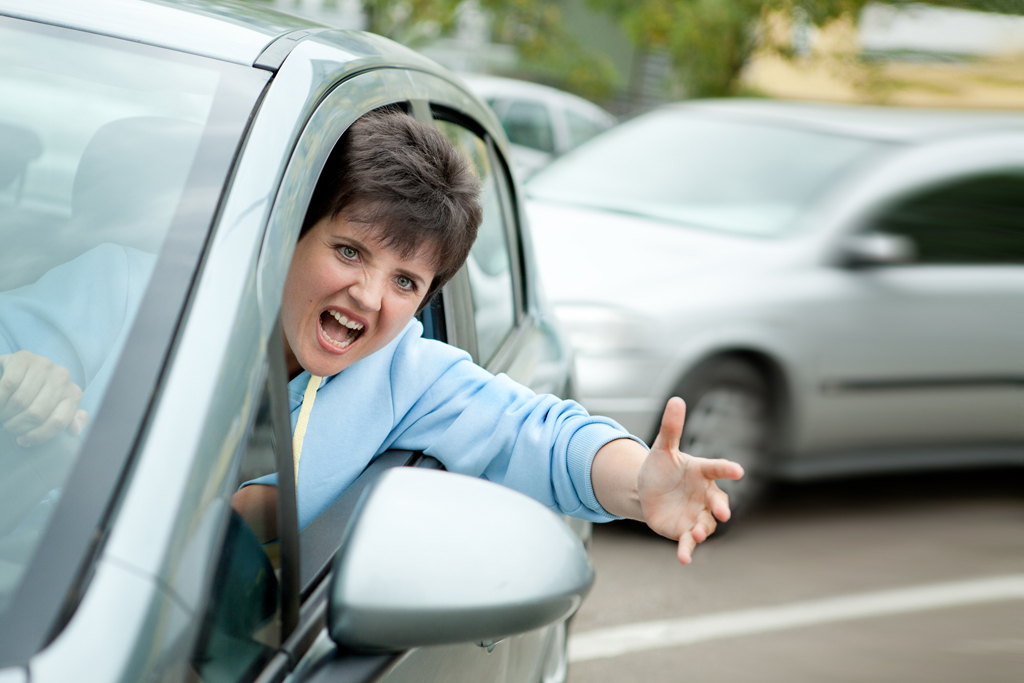Despite advancements in auto engineering,
road rage continues to undermine highway safety
By Jim Gorzelany
CTW Features
Myriad news reports of assorted road rage incidents and even bold-faced highway shootings in some parts of the country are putting a new spin on the concept of auto safety.
According to the results of the third-annual Road Rage Report conducted for the travel website Expedia.com in Belleview, Washington, a full 20 percent of the 1,000 licensed drivers participating in the survey said they’ve been “physically threatened” on the highway by another driver. Nearly half (48 percent) report being given “the finger” by someone in another car and a third (35 percent) have been yelled or cursed at.
And it doesn’t always end with mere verbal exchanges. Thirteen percent of respondents said they’ve been approached by angry drivers who’ve exited their vehicles, with nine percent admitting to getting into physical altercations with other motorists. Meanwhile, 19 percent said they’ve called the police to report a fellow driver’s misbehavior, and 45 percent say they have been involved in, or nearly involved in, an accident due to an inattentive driver.
As for public perception, 43 percent of Expedia’s respondents said New York City motorists are responsible for the “worst road rage” in the nation, followed by Los Angeles (30 percent) and Chicago (16 percent) as the three cities having the least courteous drivers in the U.S.
Those with a particularly volatile temper might want to back a bag, fill the tank and head for pastoral Portland, Oregon, which survey respondents cited as having the most considerate drivers in the nation, with Minneapolis/St. Paul coming in a close second.
As for individual types of infuriating highway behavior, the Expedia survey determined that — perhaps not surprisingly — texting while driving was found to incite the most ire among one’s fellow motorists, setting off 22 percent of those queried, followed by tailgating (14 percent), cutting in a line of traffic at the last minute (13 percent) and hogging the left lane (11 percent).
Of course, this type of behavior is always the “other guy’s” fault, right? In the survey 45 percent of those queried escaped blame and cited their fellow drivers for engaging in careless highway conduct. “Many of us have been guilty of these behaviors behind the wheel — it’s easier to notice poor driving when it isn’t you,” says John Morrey, Expedia.com’s vice president and general manager.
To that end, 14 percent of drivers questioned say they “occasionally” talk on the phone, text or use social media behind the wheel, while 37 percent admit to “multitasking” when they should be concentrating on the road ahead. Fifteen percent said they’ve dangerously exceeded the speed limit. And though only two percent of respondents said they “regularly” honked their cars’ horns at other drivers for egregious actions, 14 percent said they did so “occasionally.”
To help nip road range in the proverbial bud, experts caution that if another driver cuts you off or is otherwise driving aggressively, slow down and give him or her enough room to pass. Do not respond with obscene gestures or equally hostile actions. If you inadvertently cut off another driver, try to apologize by making a suitable hand gesture, again not of the incendiary variety.
And if you do find yourself at the receiving end of another driver’s anger, experts say the best way to respond is not to react at all. But if you feel threatened because of another driver’s actions, use your cell phone to call police or drive to a police station if there’s one within proximity. Never exit your vehicle to confront the other person if you’re at a traffic signal or are otherwise stopped.
© CTW Features

